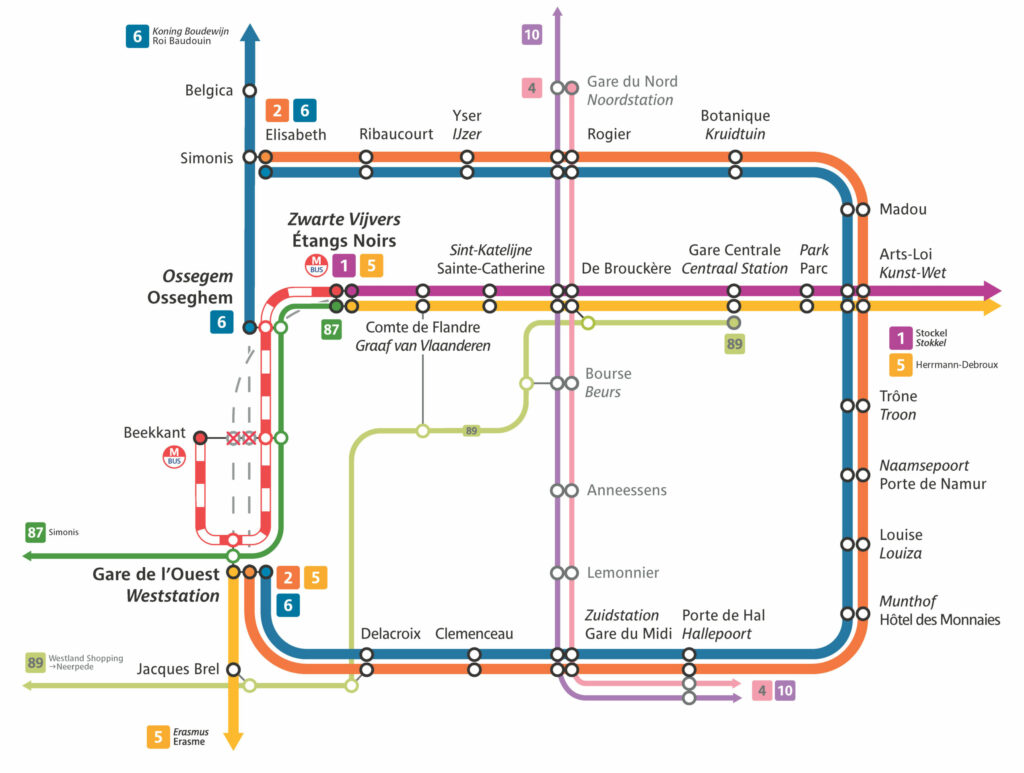Brussels public transport company STIB is using the long weekend of Saturday 9 to Monday 11 November to replace two switches at Beekkant station in the municipality of Molenbeek-Saint-Jean, interrupting lines 1, 2, 5 and 6.
The switches are located at the intersection of the four metro lines and the work will therefore impact all metro traffic: lines 1 and 5 will be interrupted between Weststation/Gare de l'Ouest and Zwarte Vijvers/Étangs Noirs, and lines 2 and 6 between Weststation/Gare de l'Ouest and Ossegem/Osseghem.
"Two switches at Beekkant station must be replaced as part of regular network maintenance," STIB announced in a press release. "The pedestrian bridge connecting Rue Alphonse Vandenpeereboom and Rue Dubois-Thorn will also be closed during the works."
The interruption is planned during the long weekend of 9 to 11 November to limit the impact on passengers. The works will start on Friday night and end overnight on Monday. From the start of service on Tuesday 12 November, the metros will run normally again.

Credit: STIB
As an alternative for passengers, STIB is providing a shuttle bus between Weststation/Gare de l'Ouest and Zwarte Vijvers/Étangs Noirs, via Ossegem/Osseghem and Beekkant. Additionally, bus line 87 (Simonis – Beekkant) will be extended to Zwarte Vijvers/Étangs Noirs via Weststation/Gare de l'Ouest and Ossegem/Osseghem.
Passengers can also take lines 2 and 6 from Simonis and Weststation/Gare de l'Ouest to Kunst-Wet/Arts-Loi to continue their journey towards Herrmann-Debroux or Stokkel with lines 1 and 5. Those who want to go to the city centre can take lines 2 and 6 to Zuidstation/Gare du Midi or Rogier, and then tram line 4 or 10 to De Brouckère.
Adapted routes can be found in the route planner on STIB's website and app.
Necessary every 45 years
The switches consist of iron rails and sleepers and the ballast on which they rest. They are essential for the proper functioning and safety of the underground network. On average, these switches must be completely replaced every 45 years. The new models that STIB is installing are more robust, easy to maintain and compatible with the new signalling system that is now being rolled out.
The entire STIB metro network has 146 switches, which were installed between 1976 and the early 2000s. They are located in strategic places so that the metros can access the network from their depot and vice versa, or can make a U-turn if necessary, for example in the event of a disruption to the network.
Most maintenance work (replacement and/or maintenance of tracks, sleepers, third rail, etc.) is carried out at night outside of operating hours, but some more serious interventions require a longer interruption. Therefore, STIB is taking advantage of the public holidays – when the metro is used less – to carry out these necessary works with minimal impact on its customers.

